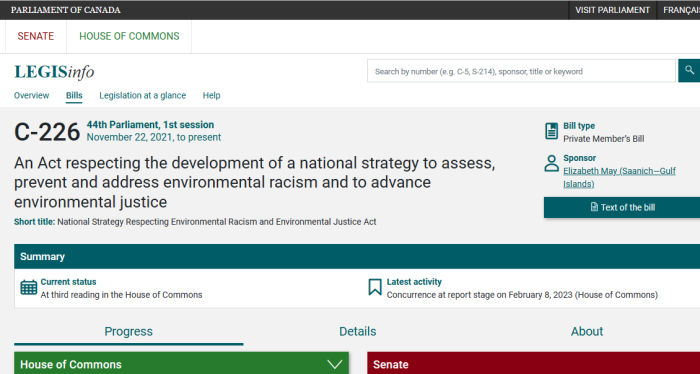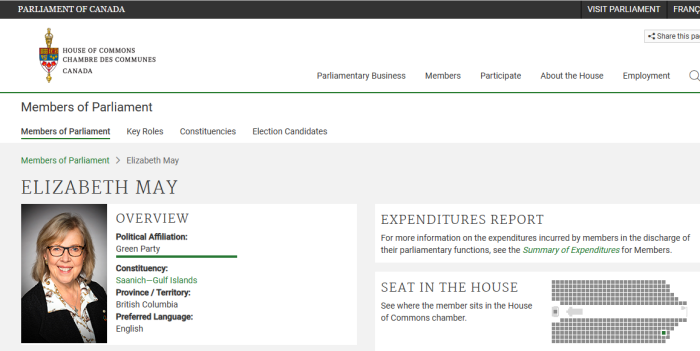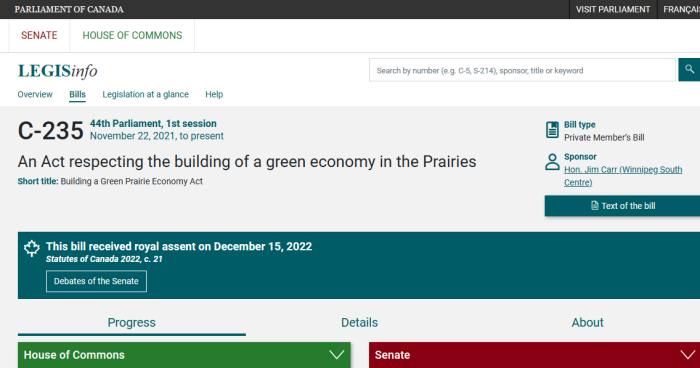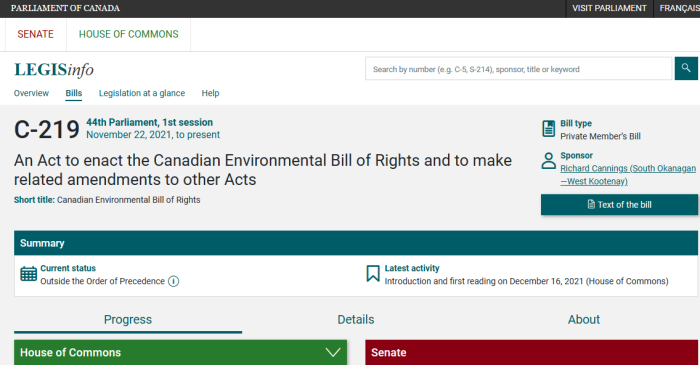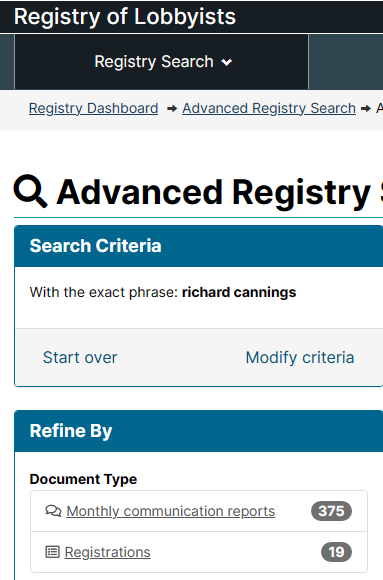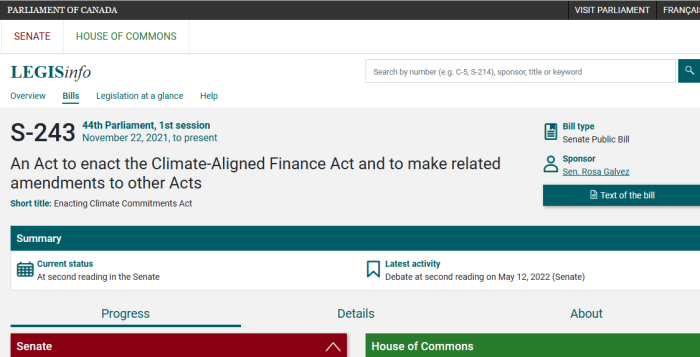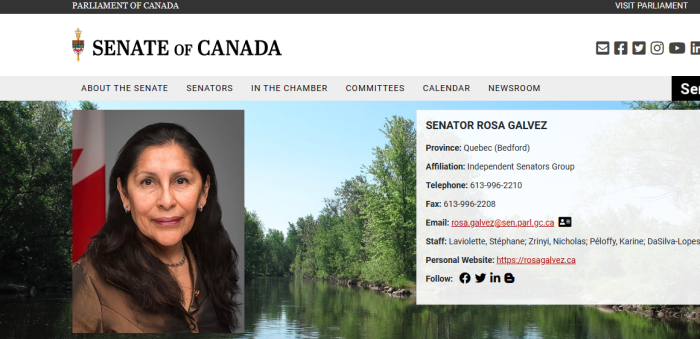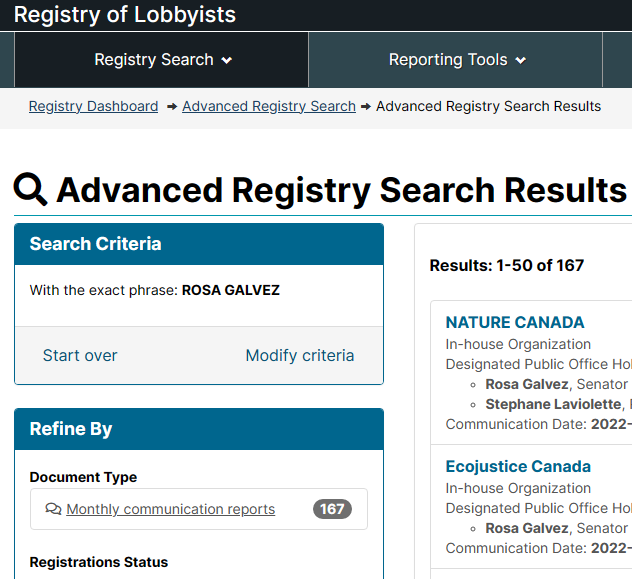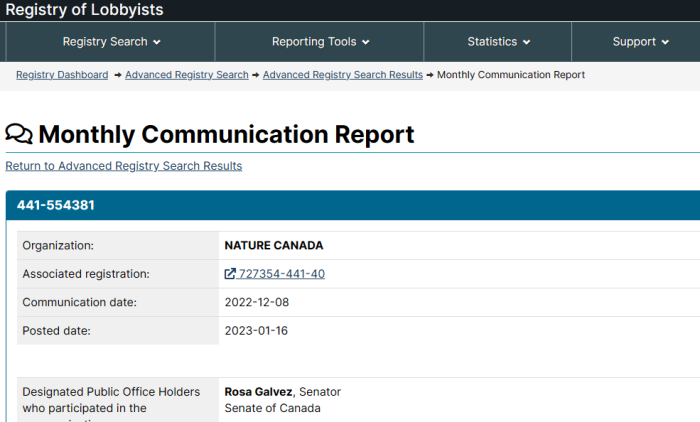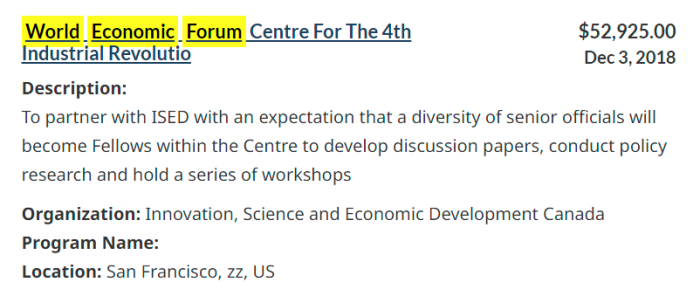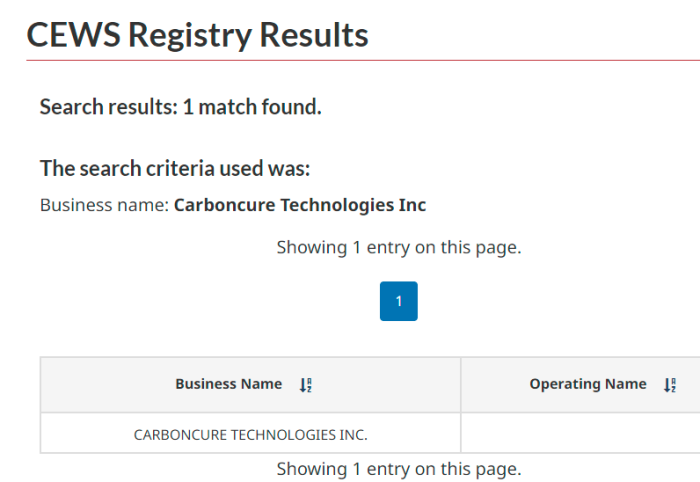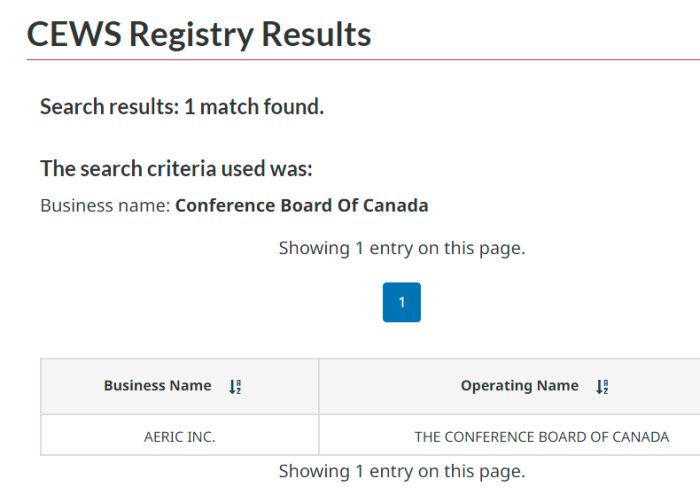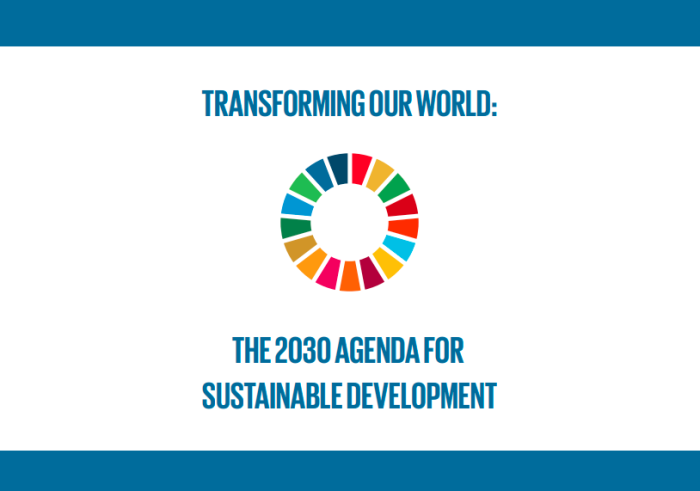
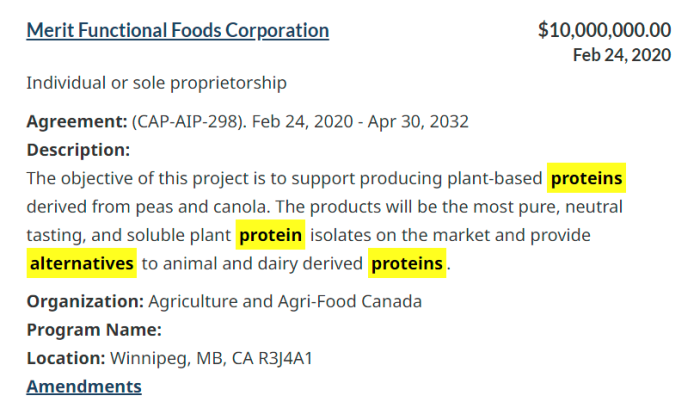
“Eat the bugs” is a global effort to change the consumption habits of people and animals across the world. It’s also part of a larger movement towards “alternative” sources of protein. And a significant piece of this is being financed with public money. Let’s get into some of the details.
For clarity: the $152.8 million to Protein Industries Canada is to fund the “Supercluster” as outlined in the 2017 Federal Budget. The money is then redistributed to various grantees.
There are also significant grants being handed out for various plant-based meats and alternatives. So, it’s not all about just the bugs. Merit is a new food processor on the north end of Winnipeg and works with plant proteins. Seems that Government really is trying to kill traditional farming.
Isn’t it strange that so much money is spent on pesticides and other things to wipe out insects, but now, they are to be breed on a massive scale?
Note: some of these entries were included in a previous piece on the subject of subsidies for cricket farming. However, the issue is far bigger than just that.
| COMPANY |
DATE |
SUBJECT |
AMOUNT |
| 2066879 Alberta Ltd. |
May 17, 2018 |
Baked Products W/Insect Proteins |
$10,000.00 |
| 2589002 Ontario Inc. |
Jun 1, 2020 |
Raw Insect-Based Protein For Pets |
$43,812.00 |
| Aspire Food Group Ltd. |
Jul 10, 2020 |
Build Comm. Demonstration Facility |
$8,500,000.00 |
| Aspire Food Group Ltd. |
Nov 1, 2021 |
Cricket Production, Processing Facility |
$50,000.00 |
| Casa Bonita Foods, Inc. |
Aug 9, 2021 |
Protein Snacks With Cricket Flour |
$39,000.00 |
| Dalhousie University |
Mar 30, 2021 |
Hemp/Cannabis Waste |
$25,000.00 |
| Enterra Feed Corp. |
May 1, 2020 |
Alternative Proteins For Animals |
$24,000.00 |
| Entologik Inc |
Jun 18, 2020 |
Continuity Of Operations |
$58,979.00 |
| Entologik Inc |
Aug 3, 2020 |
Automate The Rearing Process |
$30,000.00 |
| Ferme Bogemans Inc. |
Dec 3, 2018 |
Animal Nutrition From Insects, Fertilizer |
$40,430.00 |
| Gaia Protein Ltd. |
Apr 1, 2021 |
Cricket Production Technology |
$42,000.00 |
| Grévio Inc. |
May 11, 2020 |
Egg Laying, Hatching, Rearing Crickets |
$48,800.00 |
| Griffith Foods Limited |
May 1, 2019 |
Alternative Protein Products |
$61,000.00 |
| McGill University |
Nov 5, 2021 |
Cricket Rearing, Collection, Transformation |
$30,000.00 |
| Merit Functional Foods |
Feb 24, 2020 |
Plant-Based Proteins From Peas/Canola |
$10,000,000.00 |
| Näak Inc. |
Oct 29, 2018 |
Products Cooked W/Cricket Powder |
$48,517.00 |
| Näak Inc. |
Sep 23, 2020 |
Low-Powder Cricket Energy Bars |
$123,178.00 |
| OECD |
Mar 20, 2020 |
Market Research, Alt Proteins |
$97,460.00 |
| PEI Bioalliance |
Nov 18, 2020 |
Sustainable Protein Production Program |
$601,817.00 |
| Pholoho Biotechnology |
Jan 24, 2022 |
Equipment For Insect-Based Proteins |
$115,000.00 |
| Protein Industries Canada |
Mar 15, 2018 |
Protein Industries Supercluster |
$152,843,759.00 |
| Queen’s University |
Mar 30, 2020 |
Insect/Plant-Based Proteins |
$132,158.00 |
| Sustento Inc. |
Dec 1, 2021 |
Dog Food With Novel Ingredients |
$50,000.00 |
| Veterinarians W/O Borders |
Dec 16, 2021 |
Innovation, Cricket Farming |
$1,999,999.00 |
|
|
|
|
Of course, all of the listings here can be verified by checking the Federal Government’s own database on grant money issued.

The alternative protein section is just 1 out of 5 initiatives undertaken in this program. Pretty convenient that we had shutdowns over the last 2 years decimating undesirable industries.
Aspire Food Group, did recently announce that its cricket production plant in London, Ontario was finally finished. A large part of this was financed by Canadian taxpayers. Additionally, Aspire is part of NACIA, the North American Coalition for Insect Agriculture. This is big business.
Insects are an untapped natural resource with the potential to change our agricultural systems to be safer and more sustainable.
Anchored by Founding Member companies, Aspire Food Group, Beta Hatch, EnviroFlight, InnovaFeed, and Ynsect, NACIA members are currently 200 strong, based in 12 countries, 50 companies, and 23 universities.
NACIA members include insect producers, product makers in food, animal feed, pet food and soil health, as well as technology and service providers for agriculture and food. Researcher and university student members are examining how to improve the insect agriculture industry through scientific inquiry.
NACIA is currently working to improve the regulatory environment in North America, connect our members with industry stakeholders, and the knowledge they need to grow. We also work to inform key stakeholders about the potential for insects to provide environmentally sustainable, highly nutritious ingredients that can be produced as part of circular and regenerative agriculture.
It’s interesting that their “mission statement” talks about creating more sustainable agriculture systems. This suggests that the goal isn’t just to supplement more traditional farming, but to replace it altogether. Hard to disregard the food processing plants being destroyed, in light of this.

NACIA partners with similar organizations in Asia and Australia, and with the pet-food industry. It’s not just about getting humans to eat the bugs, but their dogs and cats too.
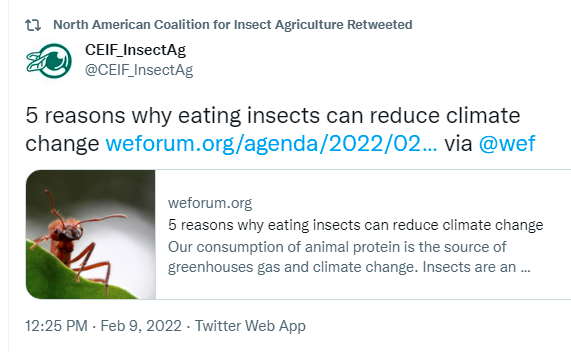
NACIA retweeted this February 9 article from the World Economic Forum on how eating bug can help reduce climate change. That is a very common talking point: that converting from a meat diet to a bug or plant based diet will reduce greenhouse gases.
NACIA’s Twitter account was created in 2017. Although not terribly active, it does boost other groups and individuals connected in the industry.
In April 2022, NACIA co-hosted a webinar with IPIFF about trans-Atlantic business opportunities for farmed insects both for human and animal consumption. Bugs were also to be used in fertilizer. Interestingly, they cite the corona “pandemic” and conflict in Ukraine as reasons to accelerate. Watch the clip from the start of the video.
Now, what if things were even more organized than that?
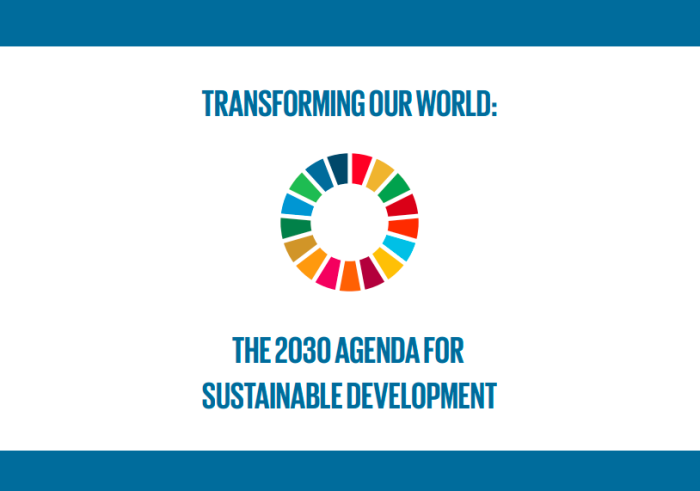
This agreement seemed so harmless when Stephen Harper signed it in 2015, doesn’t it? Now, Trudeau is domestically implementing it, showing there’s really just 1 party.
Kudos as well to Jordan Peterson. He did a great job at the U.N. for those 3 years, removing the ideological clap-trap (his terminology), to make the contents less obvious to readers.
Goal 2. End hunger, achieve food security and improved nutrition and promote sustainable agriculture
2.1 By 2030, end hunger and ensure access by all people, in particular the poor and people in vulnerable situations, including infants, to safe, nutritious and sufficient food all year round
2.2 By 2030, end all forms of malnutrition, including achieving, by 2025, the internationally agreed targets on stunting and wasting in children under 5 years of age, and address the nutritional needs of adolescent girls, pregnant and lactating women and older persons
2.3 By 2030, double the agricultural productivity and incomes of small-scale food producers, in particular women, indigenous peoples, family farmers, pastoralists and fishers, including through secure and equal access to land, other productive resources and inputs, knowledge, financial services, markets and opportunities for value addition and non-farm employment
2.4 By 2030, ensure sustainable food production systems and implement resilient agricultural practices that increase productivity and production, that help maintain ecosystems, that strengthen capacity for adaptation to climate change, extreme weather, drought, flooding and other disasters and that progressively improve land and soil quality
2.5 By 2020, maintain the genetic diversity of seeds, cultivated plants and farmed and domesticated animals and their related wild species, including through soundly managed and diversified seed and plant banks at the national, regional and international levels, and promote access to and fair and equitable sharing of benefits arising from the utilization of genetic resources and associated traditional knowledge, as internationally agreed
2.a Increase investment, including through enhanced international cooperation, in rural infrastructure, agricultural research and extension services, technology development and plant and livestock gene banks in order to enhance agricultural productive capacity in developing countries, in particular least developed countries
2.b Correct and prevent trade restrictions and distortions in world agricultural markets, including through the parallel elimination of all forms of agricultural export subsidies and all export measures with equivalent effect, in accordance with the mandate of the Doha Development Round
2.c Adopt measures to ensure the proper functioning of food commodity markets and their derivatives and facilitate timely access to market information, including on food reserves, in order to help limit extreme food price volatility
Goal 13. Take urgent action to combat climate change and its impacts*
13.1 Strengthen resilience and adaptive capacity to climate-related hazards and natural disasters in all countries
13.2 Integrate climate change measures into national policies, strategies and planning
13.3 Improve education, awareness-raising and human and institutional capacity on climate change mitigation, adaptation, impact reduction and early warning
13.a Implement the commitment undertaken by developed-country parties to the United Nations Framework Convention on Climate Change to a goal of mobilizing jointly $100 billion annually by 2020 from all sources to address the needs of developing countries in the context of meaningful mitigation actions and transparency on implementation and fully operationalize the Green Climate Fund through its capitalization as soon as possible
13.b Promote mechanisms for raising capacity for effective climate change-related planning and management in least developed countries and small island developing States, including focusing on women, youth and local and marginalized communities
.
* Acknowledging that the United Nations Framework Convention on Climate Change is the primary international, intergovernmental forum for negotiating the global response to climate change.
Consider Goal #2 of the United Nations Sustainable Development Agenda, or Agenda 2030. All of this sounds harmless on the surface, until you realize that “sustainable food systems” means replacing what we have now in the West.
As for Goal #13: if we take the notion at face value that climate change is a dire threat, and bug-based agriculture and manufactured proteins can offset that, then this new type of food supply could be seen as a solution. Of course, this is just an excuse to sabotage existing systems.
It’s a common sales pitch that insect farming leads to a higher protein yield than with more traditional ones (like with livestock). Other sources of protein can be manufactured. The goal is simply to boost production overall, but reducing the quality of the protein sources available. Did anyone here really want bug diets?
It has been widely speculated that pandemic restrictions (particularly restrictions on travel and movement) would be brought back. However, the next iteration would be climate lockdowns. This is a variation of removing freedoms. But instead of losing the ability to travel, the autonomy over diet could be restricted. After all, we can’t have people eating meat when there is a climate crisis.
Re-watch the video above. It’s clear that pushing insect consumption is being done — at least in part — under the guise of UN Agenda 2030. There’s lots of “non-meat” alternatives being pushed.
Of course, it seems very unlikely that the elites who rule us will ever have to eat the bugs. Exceptions will be made for those essential people.
(1) https://search.open.canada.ca/grants/
(2) https://ised-isde.canada.ca/site/innovation-superclusters-initiative/en/about-canadas-innovation-superclusters-initiative
(3) https://nacia.org/
(4) https://nacia.org/partners
(5) https://twitter.com/NACIA_org
(6) https://twitter.com/CEIF_InsectAg/status/1491508619740917763
(7) https://www.youtube.com/watch?v=tIHbSE_1–g
(8) https://www.weforum.org/agenda/2022/02/how-insects-positively-impact-climate-change/
(9) https://sdgs.un.org/2030agenda
Like this:
Like Loading...
